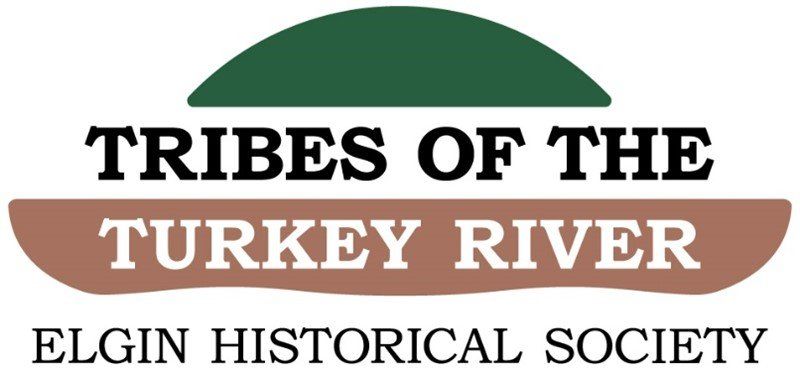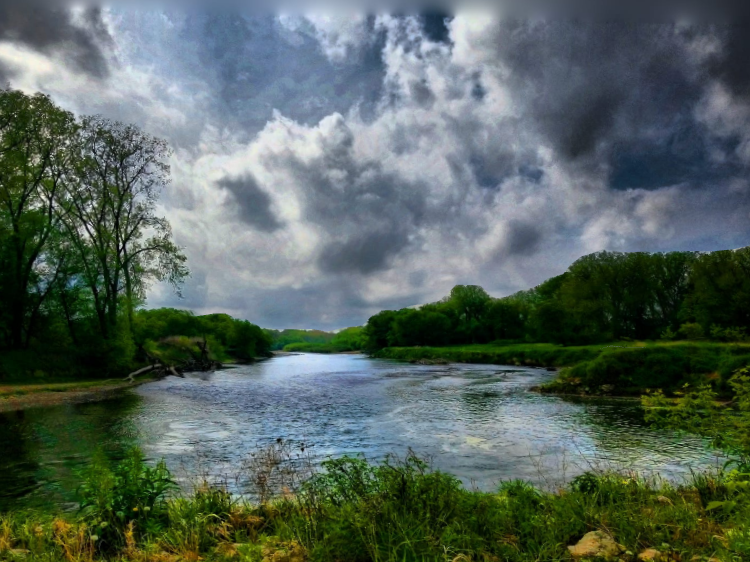Tribes of the Turkey River

Honoring the Tribes of the Turkey River
The Elgin Historical Museum is surrounded by lands rich in Native American history along the Turkey River. Elgin settlers from Europe encountered artifacts from earlier cultures including arrowheads, stone tools, grinding stones and other implements. Stories and Native lore were passed orally from generation to generation. The Elgin Historical Society will continue to work to preserve these for future generations.

Our Mission
- To record and preserve non-funerary artifacts of culture, history and stories of Native Americans who lived in the area surrounding the confluence of the Turkey River and Otter Creek in Elgin.
- To provide a safe repository for artifacts significant to Native American culture and to foster an understanding of and respect for the lives and culture of those who came before us.
- To establish an archive of resources in print and digital formats, as an extension of the Elgin Historical Society.

Exploring the Turkey River Tribes’ History
Native Americans lived in what is now known as Fayette County for thousands of years. A progression of peoples settled and lived in the Turkey River hills and valleys beginning at the end of the last ice age.
Beginning about 1400 years ago, people during the Woodland archaeological time period, began to build effigy mounds. From about 1000 years ago until the arrival of the Europeans, year-around villages surrounded by gardens of corn, dotted the region, and people took advantage of the rich and diverse resources offered by the Turkey River.
Red Ocher were perhaps the first settlers. As French settled in Michigan, Wisconsin and Illinois, the Sauk and Fox (Sac and Meskwaki) migrated into Iowa.
In 1830 the United States “purchased” a 40-mile wide strip of land to form a neutral territory. The Ho-Chunk (Winnebago) people were forced to relocate to the Neutral Ground from Wisconsin.
When European settlers came to the site that eventually became Elgin, they began to erect a mill on the Otter Creek. This was not allowed to stand, as it was still Neutral Territory.
On December 28, 1846, Iowa became a state. The Ho-Chunk Indians gave up rights to the Neutral Ground, their home since 1833. By 1849 they were moved to a reservation in Minnesota.
The artifacts left behind tell the history of the lives and cultures of these peoples. This story deserves to be preserved so future generations become aware of the area’s rich history.
(Copy from 1988 edition of “Elgin Then and Now” with 2022 updates from the Office of the State Archaeologist)
Help Preserve History
Here is how you can help us preserve this history:
- Share your family stories of Early Cultures interaction
- Tell us about the artifacts collected, or donate them to the Museum
- Donate funds to make the Tribes of the Turkey River exhibit a reality
Contact us:
- Phone: 563-422-4568
- Make a Donation
Interpretive Center Renovation
The Tribes of the Turkey River Interpretive Center project will include restoration of the second floor of the Elgin Historical Museum and development of an interpretive plan and fabrication of materials to honor the Native American history along the Turkey River.
Community Engaged Archaeology in Elgin
Summary of events and knowledge generated from the Community Engaged Scholars program grant. Learn about the Importance of the Turkey River to Indigenous Communities Past and Present.
A Citizen’s Guide to Recording Archaeological Finds in Iowa
Resources to assist non-archaeologists with basic artifact identification, site documentation, artifact collection, and collections care.
Turkey River Archaeo-Blitz
Turkey River Archaeo-Blitz events were held on October 22, 2022 and April 22, 2023. Visit the Turkey River Archaeo-Blitz page for recaps on both events.

